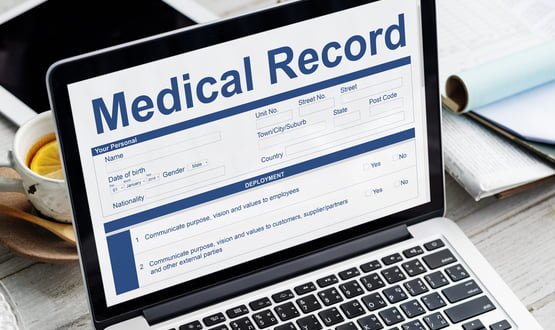Put another record on
- 20 September 2012

After a slow, then steady, then stop, then start again beginning, the Summary Care Record programme is on track to reach 40m people by early 2014 and the whole population soon after.
More than one third of the population now has an SCR, which contains basic demographic details about them along with allergies, current medications and adverse reactions.
The record is uploaded and automatically updated from a GP practice system to the national data Spine, and the summary information is available at any site with the application needed to view the records.
The justification for the project has always been that a patient who gets sick or who has an accident outside their local area can go to an out-of-hours provider and staff will have some information about them.
However, the chances of that holiday-maker having an SCR – or their receiving hospital or out-of-hours surgery being able to see it – are still fairly slim, as uptake varies across the country.
While Bury and Darlington have reached 100% coverage, some areas such as Hampshire have not started deploying SCRs at all (the county has its own shared record project).
Using the records
When Dr Gutteridge first got involved in the SCR programme in 2010, uploads were running at between 50,000 and 100,000 a week. These days, up to 350,000 records are being uploaded every week, averaging about 1m a month.
“The challenge now is not that process, but how to engage out-of-hours services and hospitals to start
putting in summary care applications so they can look at the record,” he says.
The trick, he adds, is to engage individual trusts and use connections with co-ordinators at strategic health authorities and primary care trusts, as well as their successor organisations.
Practically, he argues that an area needs to have about 60% of its SCRs uploaded before users are encouraged to access the records. If health professionals start using the system before that point they will find a lot of patients without records and may become disillusioned with the whole idea.
A Department of Health SCR Programme Update in October 2011 said 73% of out-of-hours doctors using the records felt they had increased patient safety, and 74% felt having additional information would increase their ability to make informed decisions.
Dr Gutteridge says this is not surprising, since having access to the record gives staff more information about the patient in front of them. However, there is no evidence that the record affects referrals into secondary care.
The English SCR team is keeping a close eye on developments in Scotland, where health boards recently agreed to start using the Emergency Care Summary in scheduled care to aid medicines reconciliation.
Future use of the SCR in England is “under development. “Our focus at the moment is to get pharmacies to use it, and medical admissions units,” Dr Gutteridge says.
One idea that is being explored is that the NHS may be able to track SCR accesses as a way of monitoring how patients use the health system.
Expanding the record
The Summary Care Record idea was announced in ‘Delivering 21st Century IT’, the strategy that led to the National Programme for IT in the NHS.
As with so much of the programme, the initial target for its development and roll-out was hugely ambitious; every patient in England who wanted a record was supposed to have one by the end of 2007.
In the event, however, the project was held up by rows over consent and confidentiality. The British Medical Association and other organisations, such as Londonwide LMCs, took the view that patients should opt-in to the first, national patient record, rather than opt-out.
Several reviews took place before the coalition government finally gave the go-ahead to the project, as long as people were told in advance that SCRs were being created.
These disputes have never really been resolved. When eHealth Insider contacted Londonwide LMCs in June, for example, it said its position had not changed.
However, Dr Gutteridge says concerns about patient consent were largely allayed by NHS medical director Sir Bruce Keogh’s review and the Public Information Programme process.
This includes an opt-out letter in the pack sent to local residents before SCRs are created. However, in some of the areas where SCRs are now being created, the PIPs were sent quite some time ago.
Despite this, there are no plans to “re-PIP the population.” It is also not clear what will happen in areas that have yet to run PIP programmes. NHS Connecting for Health currently funds the PIPs; but only until the end of this financial year, when it will be abolished.
Patient access
Sir Bruce’s review also concluded that SCRs should start with a small dataset, taken from the GP record, and that hospital information would not be uploaded.
However, if at some later time technology changed or opinion changed and people wanted to add additional data “we could design a decision-making process that would enable that to happen,” Dr Gutteridge says.
A new advisory board is being created to consider expansion of the records. A chair has been appointed, but the full committee is not yet formed.
Another issue to consider is patient access. The NHS built its own health organiser, HealthSpace, and then developed it as a service through which patients could view their SCR.
At one point, there were ambitious plans for the website, including a ‘Facebook-style communicator’ function that would enable patients to contact their doctors electronically.
But HealthSpace attracted few users, and it was killed off in the recent NHS information strategy which, ironically, pledged a big expansion of patient access to records and other data.
Dr Gutteridge says there is no plan or “big idea” for how patients should be able to access their record at the moment, although he still wants patients to be able to find and add data and commentary and communicate with professional staff electronically.
He gave the example of Renal PatientView as an independently created portal that allows patients in renal units nationwide to view their records and test results.
“There clearly will be offerings in the future, but I don’t know what they’ll be like,” he says, suggesting that a decade after it is announced, there is still much to be decided about the future of the Summary Care Record.




